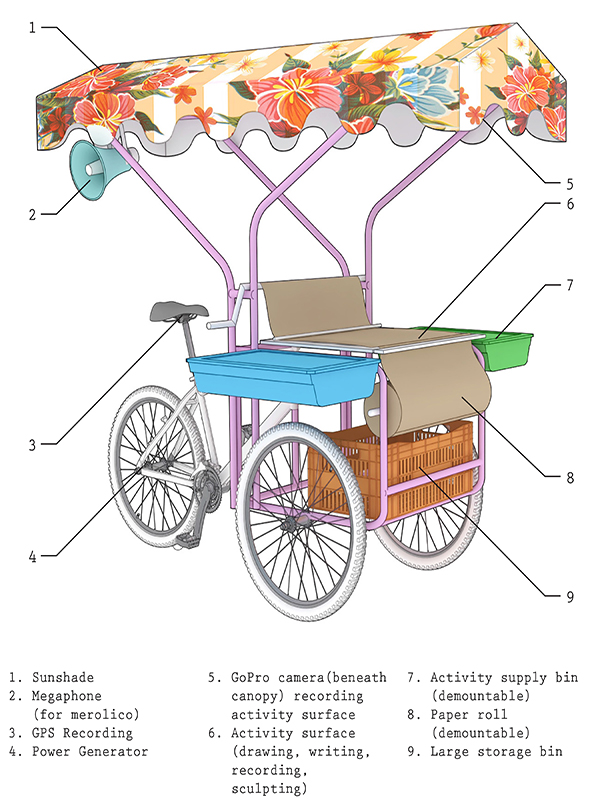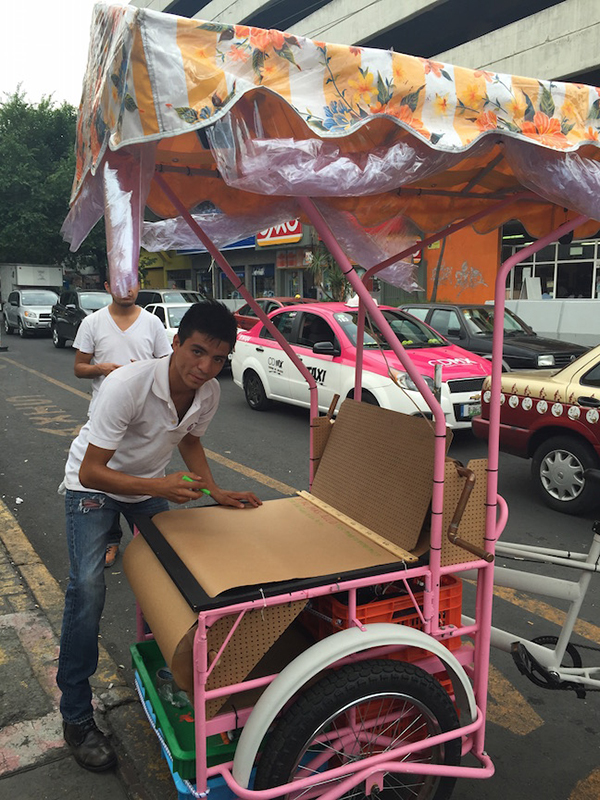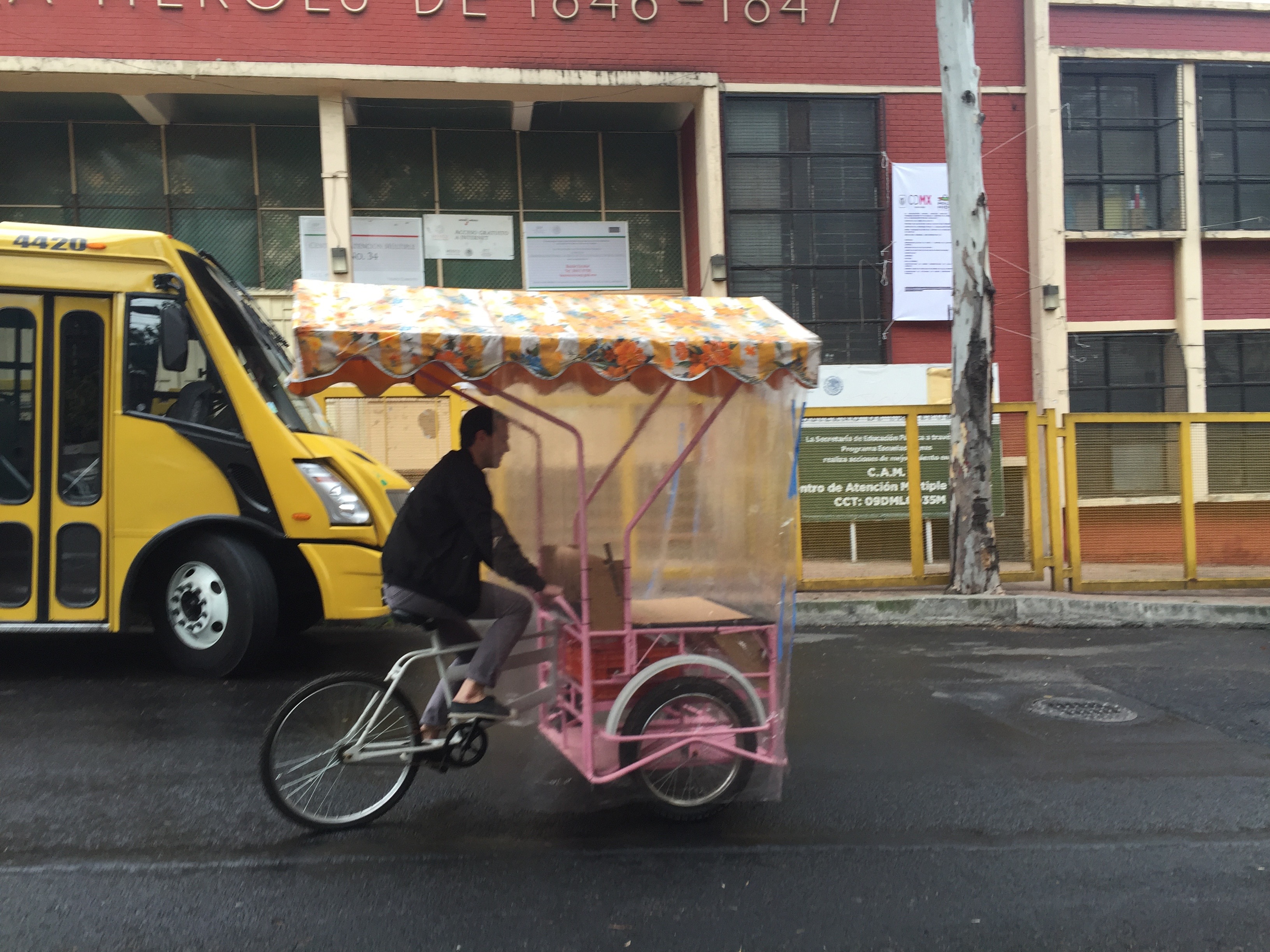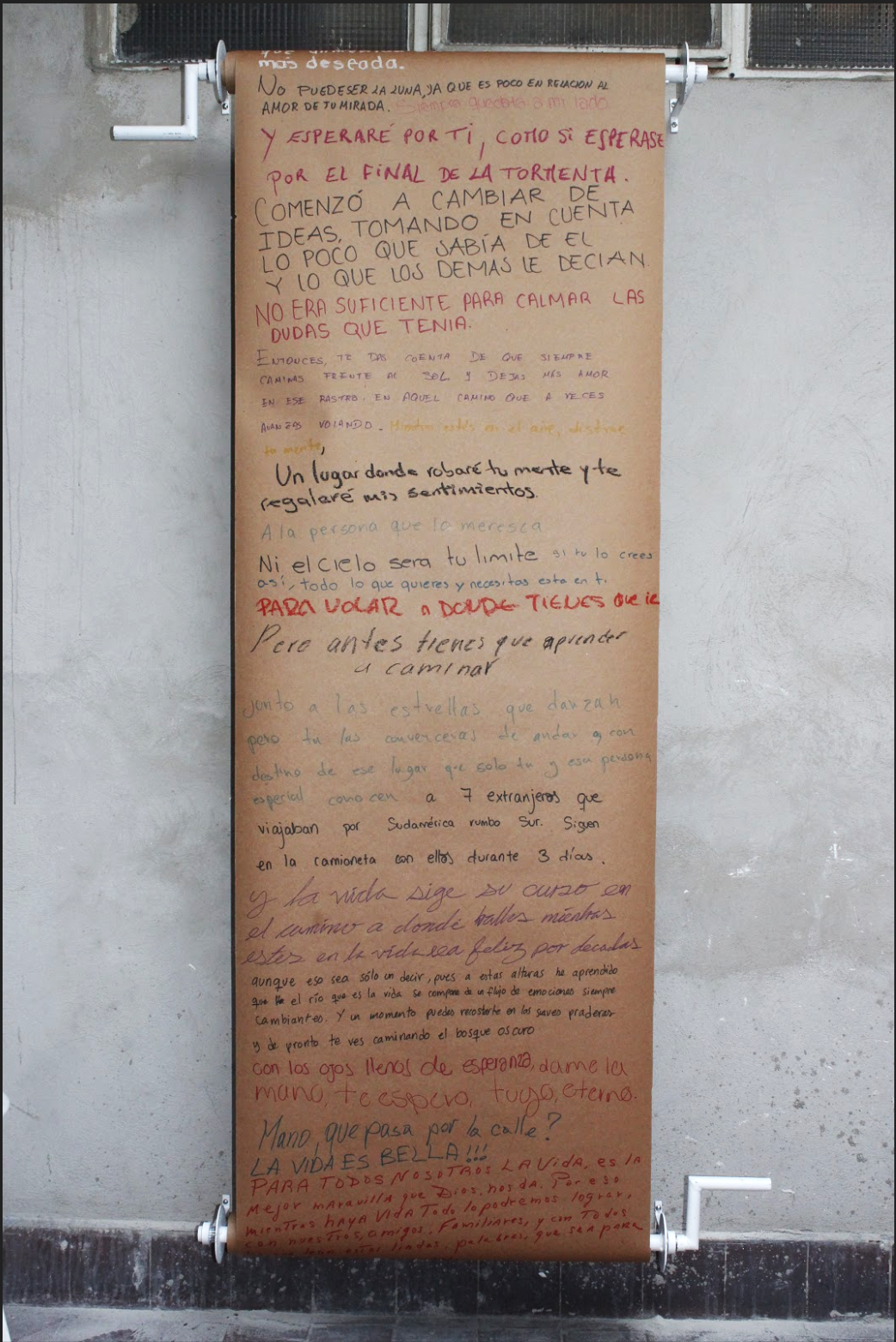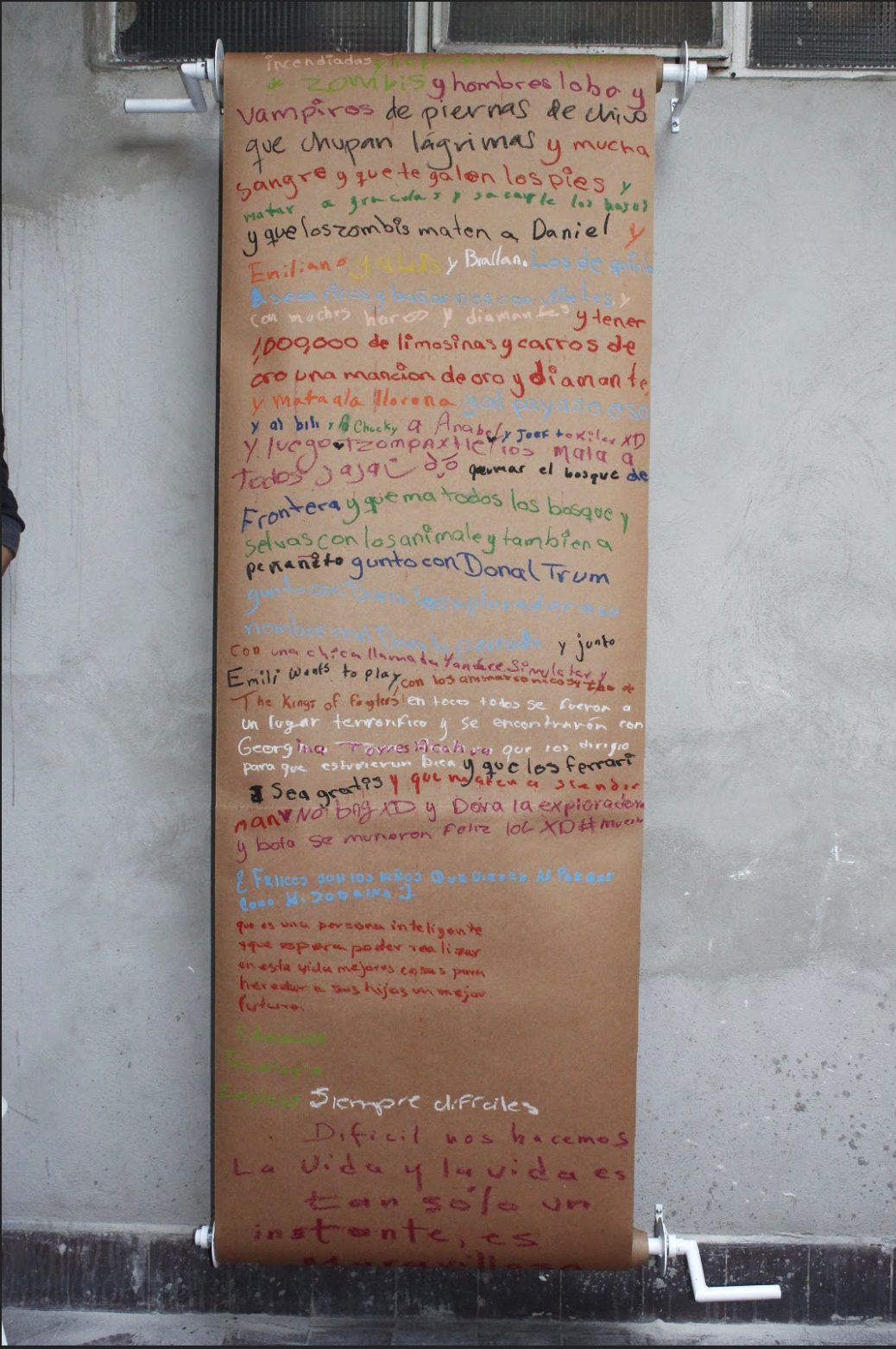TRICICLO EXQUISITO
MIT Media Lab
Museo Tamayo
Archivo Diseño y Arquitectura
2017 Design Week Mexico
Co-Machines
With Tyler Stevermer
and the help of:
Tessia Pacchiano, Dalia Quiroa, Michelle Calderón, Georgina Rezza, Triana Martínez, Alfredo Jimenez, Gerardo Romero, Carlos Soto, Carlos Gómez, Sands Fish, Juanita Davis, Sofia Prado, Orcun Gogus, Alfredo Jimenez
Museo Tamayo
Archivo Diseño y Arquitectura
2017 Design Week Mexico
Co-Machines
With Tyler Stevermer
and the help of:
Tessia Pacchiano, Dalia Quiroa, Michelle Calderón, Georgina Rezza, Triana Martínez, Alfredo Jimenez, Gerardo Romero, Carlos Soto, Carlos Gómez, Sands Fish, Juanita Davis, Sofia Prado, Orcun Gogus, Alfredo Jimenez
Triciclo infiltrates divided communities by appropriating the idiosyncratic cargo tricycle and hacking into the ambulantes’ roaming sales network. Rather than selling tamales or gas tanks, it turns this commerce tool into an artifact to transport and exchange ideas, testimonies, memories, and experiences rather than merchandise.
Triciclo endorses co-creation as a way to know thy neighbor.
Triciclo wove Colonia Pensil with Polanco, Colonia Doctores with Roma, and San Miguel Chapultepec with Ampliación Daniel Garza. You could find it outside schools and cantinas, punk venues and plazas, boutique ice cream parlors and penitentiaries, metro stations, and hospitals. Lots of love and life advice intermingled with politics and personal credos, not without hand-written emojis ;).
In Mexico City, a cacophony of sounds will come to your window from dusk till dawn. Merolicos—distinctive chants, recorded songs, and particular chimes—announce the commodities of roaming merchants or ambulantes. Locals recognize the whistle of the knife-sharpener, the triangle signaling gas delivery, the pre-recorded drone broadcasting tamales, and the terrifying shriek of steam indicating that sweet plantains are nearby.
These vendors carry their wares in retrofitted tricycles and ad hoc push-carts—weaving through traffic, lining sidewalks, and turning parks into impromptu marketplaces. They blanket the city with a vast, informal, mobile market that crisscrosses Mexico City’s sharply segregated communities. One of the city’s most significant ailments, marginalization, and segregation, are exemplified through neighborhoods “far away so close”—sitting just across the avenue from each other, yet living in drastically different worlds.
Exquisite Triciclo infiltrates these divided communities by appropriating the idiosyncratic cargo tricycle and hacking into the ambulantes’ roaming sales network. Rather than selling tamales or drinking water, it turns this commerce tool into a mobile stage, a public easel. Inspired by the surrealist parlor game of creating “exquisite corpses,” the Triciclo endorses co-creation as a way to know thy neighbor.
Besides its analog output, Exquisite Triciclo is outfitted with GPS, a Go-Pro camera, and a “Smart Pen,” registering contrasting aesthetic and idiomatic differences of the residents of each neighborhood. These devices keep a navigable digital record and a tangible physical one to be exhibited. The Triciclo’s added technology is powered through its pedaling thanks to a generator installed on the rear wheel.
Methods of fabrication serve as an easily replicable model for the region—the tricycles of Mexico City are personal machines pimped and decorated by their owners to attract attention. Exquisite Triciclo reflects its spirit in its making: gathering the knowledge and input of a diverse group of designers, fabricators, and community members to create a ludic instrument, from creation through use.
![]()
Triciclo endorses co-creation as a way to know thy neighbor.
Triciclo wove Colonia Pensil with Polanco, Colonia Doctores with Roma, and San Miguel Chapultepec with Ampliación Daniel Garza. You could find it outside schools and cantinas, punk venues and plazas, boutique ice cream parlors and penitentiaries, metro stations, and hospitals. Lots of love and life advice intermingled with politics and personal credos, not without hand-written emojis ;).
In Mexico City, a cacophony of sounds will come to your window from dusk till dawn. Merolicos—distinctive chants, recorded songs, and particular chimes—announce the commodities of roaming merchants or ambulantes. Locals recognize the whistle of the knife-sharpener, the triangle signaling gas delivery, the pre-recorded drone broadcasting tamales, and the terrifying shriek of steam indicating that sweet plantains are nearby.
These vendors carry their wares in retrofitted tricycles and ad hoc push-carts—weaving through traffic, lining sidewalks, and turning parks into impromptu marketplaces. They blanket the city with a vast, informal, mobile market that crisscrosses Mexico City’s sharply segregated communities. One of the city’s most significant ailments, marginalization, and segregation, are exemplified through neighborhoods “far away so close”—sitting just across the avenue from each other, yet living in drastically different worlds.
Exquisite Triciclo infiltrates these divided communities by appropriating the idiosyncratic cargo tricycle and hacking into the ambulantes’ roaming sales network. Rather than selling tamales or drinking water, it turns this commerce tool into a mobile stage, a public easel. Inspired by the surrealist parlor game of creating “exquisite corpses,” the Triciclo endorses co-creation as a way to know thy neighbor.
Besides its analog output, Exquisite Triciclo is outfitted with GPS, a Go-Pro camera, and a “Smart Pen,” registering contrasting aesthetic and idiomatic differences of the residents of each neighborhood. These devices keep a navigable digital record and a tangible physical one to be exhibited. The Triciclo’s added technology is powered through its pedaling thanks to a generator installed on the rear wheel.
Methods of fabrication serve as an easily replicable model for the region—the tricycles of Mexico City are personal machines pimped and decorated by their owners to attract attention. Exquisite Triciclo reflects its spirit in its making: gathering the knowledge and input of a diverse group of designers, fabricators, and community members to create a ludic instrument, from creation through use.

